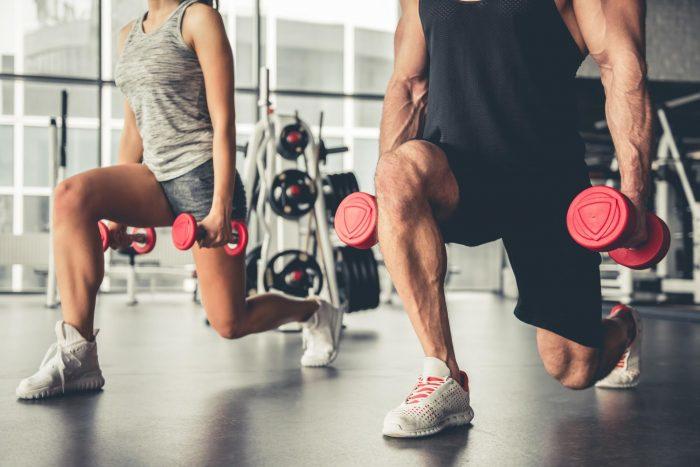A Guide To Interval Training And The Equipment You Need
Even if you’re a beginner at the gym, you’ve probably heard about interval training. People can’t seem to stop raving about its effects and efficiency, so you’ll be happy to hear that the hype is well deserved. What exactly is it, and how can you start benefiting from interval training? Keep reading to learn more.
The Benefits of Interval Training
As the name implies, interval training employs intervals, or intervening time periods, of both high and low intensity. When compared to continuous moderate exercise, high-intensity interval training (HIIT) is better for you in many ways.
Interval training has been shown to lower body weight and percentage of fat. It also helps with inflammation and mitigates insulin resistance, which can lead to diabetes. In addition to that, interval training has the same benefits as continuous moderate exercise without the lengthy time commitment. These benefits include strengthening your cardiovascular system, increasing your circulation and oxygen intake, helping prevent heart disease, and helping reduce anxiety.
And if that weren’t enough, studies have shown that HIIT is actually associated with a higher level of enjoyment than continuous moderate-intensity exercise.
How to Do Interval Training

As with any other exercise, you should always begin with a warmup phase. Elevating your core temperature in preparation for exercise not only helps increase the efficiency of your muscles and cardiovascular system, but it also helps prevent injuries because the muscles have an increased range of motion and flexibility.
A warmup should take five to 10 minutes, starting off slowly and gradually increasing in intensity. You should avoid static stretching (holding a stretch for 20 to 30 seconds) as a warmup because you should not be stretching “cold” muscles that deeply.
Lower-intensity versions of HIIT exercises and dynamic stretching – which is stretching that isn’t held for a set duration but performed in one fluid motion – are good options for getting your blood pumping and your muscles ready to work out.
When choosing your interval exercises, focus on the ones that will challenge you. The idea here is to raise your heart rate for a set period of time before allowing it to rest. Since there will be periods of rest, you will want to make sure that the exercises you’re doing will help you reach your target heart rate.
You should also only begin with five to seven exercises. Since you’re working through them at a fast pace, you will want to focus on learning the exercises and doing them correctly. It can be difficult to keep track of which exercises you’re supposed to do, and in what order, when you’re working your butt off.
Since you will typically be performing each exercise three times in a given session, it’s OK to start the first round a little slower. This will help you transition from your warmup phase to a higher intensity. It will also help you feel confident about maintaining the correct form while you work out. You never want to sacrifice proper form for increased speed, as this can result in injury.
The amount of time you should spend working out versus resting will depend on your fitness level, but a good starting point is to go all out for 20 to 30 seconds, then rest for 40 to 60 seconds. Tracking your pulse with a heart rate monitor will help you adjust your times accordingly.
During your 20 to 30 seconds of activity, you will want to complete as many reps as you can with proper posture. Knowing the number of reps you are able to complete will help you track your improvement, allowing you to gradually increase your reps over time.
To complete a full set, you’ll need to perform each exercise in your routine. You should complete two to three sets during your workout, depending on how much time you can dedicate to working out. You should also take a rest period in between sets to allow your heart rate to slow down.
You should never train on back-to-back days. Allowing your body time to recover is important for reducing the risk of injury and ensuring that your muscles have time to grow stronger. Aim to interval train two to three times a week at a maximum.
Your core workouts should be between 15 and 30 minutes long, not including warmup or cooldown phases. The important thing to remember is that even if you’re pressed for time, completing a 15-minute interval workout is a great way to prioritize your health in the context of a busy schedule.
Increasing Interval Training Intensity
If you’ve been interval training for a while and you want to add intensity to your workouts, consider adding weights or resistance bands. This will not only increase the intensity of your workout, but it will also boost the number of calories you burn both during and after your workout.
Combining strength training and cardio helps promote muscle effectiveness and can maximize the use of your time.
If you don’t have access to a heart rate monitor, you can employ the “talk test.” Essentially, you should be working out hard enough that you are not able to engage in full-sentence conversations. If you can speak with ease, you’re not working out hard enough. If you are unable to speak at all, you need to lower the intensity of your workout.
You can also increase your intensity by teaming up with a workout buddy who can challenge you, and vice versa. It can be easy to fall into a rut when you’re working out solo, but watching your partner excel can motivate you to work even harder.
Interval Training Equipment

Similarly to the concept of keeping your variety of exercises to a minimum, keeping track of your interval times can become impossible while you’re working out. Consider using a free interval timer app, such as this one from Deltaworks. You can customize your sets and times to take the guesswork out of the equation, and view your workout history to track your progress.
You should also consider using free weights and resistance bands to add strength training to your interval sessions and increase the intensity. Resistance bands are useful to use around your legs, and free weights are good for upper-body exercises. They can even be used at the same time.
For free weights, staying below 10 pounds is usually a good idea, especially if you are not used to using weights in your interval training. You can start with 3- to 5-pound weights. While this number may seem low, you’ll definitely feel the burn by your third set, if not before then.
A heart rate monitor is also a good investment to make sure that your heart rate is staying within a healthy range. There are two types of heart rate monitors: wrist straps and chest straps. Chest straps provide the most accurate readings and can send the information to a companion smartwatch.
While wrist strap monitors are slightly less accurate, they can be more comfortable and less restricting, which can sometimes be an issue with a chest strap monitor.
Interval Training Takeaways
Even though interval training is more time-efficient than continuous moderate-intensity exercise, keep in mind that it can be a harder workout for that time period.
It’s important to be patient with yourself and not give up. If you’re only on your second set and you feel like you’re going to keel over, extend your rest periods between exercises and lower the intensity during your active periods.
The great thing about interval training is that you can switch it up to cater to your needs and fitness level. If you’re not able to reach your desired level of intensity at the beginning, use that as a goal. You’ll be surprised by how fast you make progress and how much more you’ll enjoy working out when the intensity level is right for you.
As with any other exercise, it’s important to support your workouts with a well-balanced diet rich in vitamins, nutrients, and proteins. You should also make sure that you’re drinking enough water both during and after your workouts.
While an exercise partner can help you challenge yourself, they can also be an invaluable ally when it comes to building confidence and venting frustration. In turn, supporting them will also increase your engagement and sense of responsibility when it comes time to exercise.
No matter what, remember to give your body time to rest and take your fitness one day at a time!



 Compact/Folding
Compact/Folding Front Drive
Front Drive Rear Drive
Rear Drive